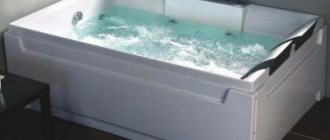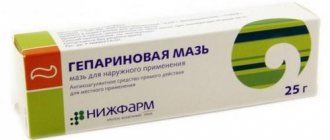Hemorrhoids are a problem that is relevant for many people, both mature and quite young. And the question that interests many is whether it is possible to play sports with hemorrhoids, and whether these concepts are compatible at all. Let's try to figure this out.
Exercise for hemorrhoids
Proctologists explain that the basis of hemorrhoids is the pathological expansion and weakening of the veins of the rectum. This provokes dystrophic changes in connective and muscle tissue, circulatory disorders, and congestion in the pelvic organs. The tone of the vascular wall is weaker, the vessels of the rectum are filled with venous blood, which provokes symptoms and complications of the disease.
The most characteristic signs of hemorrhoids are pain, burning and itching in the anus. Over time, swelling, bleeding, thrombosis, and inflammatory processes may join them.
Doctors insist that reasonable and moderate physical activity and an active lifestyle are the key to excellent well-being and an excellent way to improve health. This is also true for hemorrhoids, since often the main cause of the disease is an inactive lifestyle, complicated by sedentary work.
However, there is a downside. Hemorrhoids also often affect those who work hard physically, spend a lot of time on their feet, and engage in strength-training activities. In the first case, the vessels suffer due to stagnation, in the second there is a constant flow of blood to the pelvic organs, which can also have a negative impact on the condition of the vascular wall. It is important that physical activity is moderate - then it helps normalize blood circulation and help eliminate congestion in the veins of the rectum.
Doctors note that reasonable physical activity helps prevent the development and worsening of hemorrhoid symptoms. An active lifestyle also contributes to the overall strengthening of the body.
Treatment of hemorrhoids is usually complex and includes medications, diet and special exercises that will improve blood flow and strengthen the tone of the vascular walls.
Appropriate sports activities help both in the prevention of hemorrhoids and in treating them in the initial stages. Exercises should be gentle, not provoke overstrain of the body and not lead to an increase in existing nodes. You can do the exercises at home; no special equipment is required.
Proctologists recommend dedicating 15-20 minutes to exercise daily. This will help in the fight against the disease and reduce the risk of exacerbation. In addition to gymnastics, it is useful to walk in the fresh air.
During the period of exacerbation of hemorrhoids, it is better to hold off on physical activity, since it can provoke prolapse of the nodes and lead to bleeding from the anus. If you have had surgery to remove hemorrhoids, you should wait about two months before starting classes. In this case, power loads will be completely contraindicated, since they have a negative effect on the abdominal cavity, which provokes an increased risk of prolapse of hemorrhoids, especially during the rehabilitation period.
Gymnastics
Like most exercises, therapeutic exercises are permissible during a period of stable remission, when the disease manifests itself openly. The gymnastic complex is selected individually for each patient, depending on the degree of the disease. It is important to remember that only regular exercise really helps (ideally every day for 10-15 minutes), otherwise there will be no benefit from them. Gymnastics should be performed on an empty intestine, after numbing the hemorrhoidal cones.
- Cortexin - instructions for use and reviews. Indications for the use of Cortexin in injections and analogues of the drug
- Ginger root - how to use it at home. Useful properties and contraindications of ginger root
- What are fertile days for women? How to determine the period and window of fertility in the female calendar
What sports can you do if you have hemorrhoids?
There are types of activities that are especially beneficial for hemorrhoids. These include the following:
- Swimming. The most useful sport for this disease. The load during swimming is distributed evenly across all muscles, and excessive pressure on the abdominal cavity and pelvic area is reduced. Blood circulation in the venous vessels also improves and congestion is eliminated. Swimming does not have an age category; it can also be allowed for pregnant women. Visiting the pool is highly recommended for those who are prone to hemorrhoids.
- Run. The benefits of this type of activity are obvious. It helps improve blood supply to the pelvic veins, strengthens the abdominal muscles, and also helps fight constipation, which is one of the main causes of hemorrhoids. Running is useful both for the prevention of hemorrhoids and for preventing its transition to a severe stage. When running, arterial blood is saturated with oxygen, the circulatory system works better. Intense contractions of the legs and buttocks drive blood through the veins and prevent congestion. The nutrition of rectal tissues, the condition of blood vessels improves, and the healing of tissues and mucous membranes is accelerated. Regular jogging helps eliminate congestion and reduces the risk of inflammation in altered nodes.
- Race walking. It is considered the best type of activity, helps strengthen and tighten the abdominal muscles, tones the blood vessels, and prevents blood stagnation. It is recommended to walk at least 2-3 km per day, increasing the distance over time to 5-7 km.
- Yoga. Many yoga positions help combat the symptoms of hemorrhoids. Basic asanas help eliminate blood stagnation, improve its outflow from the pelvic fluid, and normalize intestinal function. One of the most useful is the Sarvangasana (Birch) pose. It is performed by taking a stance on the shoulder blades and raising your legs up. There are also other positions in yoga that have a beneficial effect on a person with hemorrhoids.
The listed types of activities for hemorrhoids help keep the patient’s body in good shape, help improve well-being, and relieve unpleasant symptoms. Experts do not advise sitting for a long time - try to do at least a short warm-up every hour. It’s enough to move around, warm up, and do a few exercises. Deep squats and stretching exercises may be helpful.
Approximate set of exercises
There are exercises that are aimed at preventing hemorrhoids and can be used in its complex therapy at an early stage. Please note that in advanced cases and with a number of complications, physical education will no longer help.
Gymnastics is aimed at strengthening the abdominal muscles, buttocks and perineum. There are many exercises, and they need to be performed every day for 20-30 minutes. We will offer the most popular ones. They are done smoothly and slowly, without haste.
- Scissors. Lying on the floor at a right angle, raise your legs up and begin to smoothly spread them, then cross them. Do 20-30 repetitions.
- Voltage. While lying on your back, smoothly lift your pelvis, tensing your muscles, and hold it in the extreme position, then lower yourself to the starting position. Do it 20 times.
- Cat. You need to get on all fours, taking the starting position. Slowly bend your back down, and then also smoothly arch it up. Repeat the exercise 30-50 times.
- Walking on your buttocks. Take a stable position by sitting on the floor. Stretch your legs forward. Imitate walking by moving your buttocks along the floor. Do the exercises for ten minutes.
- Stilts. This exercise helps improve blood circulation. Start walking by raising your knees high. Place your legs one in front of the other, crossing them.
- Seal. Take a lying position face down. Leaning on your knees and elbows, turn your torso in different directions, alternately touching your buttocks to the floor. It is advisable to repeat this at least ten times.
- Compression. Lie on your back, stretch your arms along your body. Squeeze your buttocks, counting smoothly to five, while simultaneously retracting your rectum. On a similar note, relax. Repeat up to 15 times.
After finishing the gymnastics, restore your breathing by inhaling and exhaling deeply several times. This set of exercises will help keep blood vessels in good shape, improve blood circulation, which will help slow down or prevent the development of the disease.
Prohibited activities for hemorrhoids
If the loads are moderate and correct, then the answer to the question of whether it is possible to play sports with hemorrhoids will be positive. But excessive activity can provoke an exacerbation of the disease and increase unpleasant symptoms, as well as lead to the loss of nodes.
The following loads are contraindicated for this disease:
- Weightlifting;
- body-building;
- powerlifting.
They put too much stress on the body. Strength exercises, and in particular abdominal exercises, greatly increase intra-abdominal pressure and have an adverse effect on blood circulation in the pelvic area. Excess pressure is the reason why the outflow of blood in the area of the venous plexuses of the rectum is disrupted. As a result, nodes appear that increase under the influence of stress and fall out of the rectum. Increased intra-abdominal pressure and impaired muscle tone of the anal canal can lead not only to exacerbation of hemorrhoids, but also to more complex consequences and complications.
Among the contraindicated sports are cycling and horse riding. The reason is that a thermal compress is formed between the seat and the athlete’s body, which provokes the appearance of congestion in the pelvic organs and increases pressure on problem areas. Therefore, if you have hemorrhoids, it is better to refrain from such types of activities.
If hemorrhoids worsen, it is recommended to stop visiting the gym; professional athletes should refrain from active training until the condition improves. Having noticed the first symptoms of hemorrhoids, you should reduce your load and adopt the following recommendations:
- Avoid exercises that increase intra-abdominal pressure, such as weighted squats and deadlifts.
- Reduce heavy lifting and perform more repetitions.
- Avoid holding your breath and straining during training.
- When performing exercises, try to reduce pressure on the rectum.
- If the disease worsens, avoid strength training.
Exercising with hemorrhoids should be reasonable and moderate so that it does not provoke an exacerbation. If surgery was performed to remove hemorrhoids, experts advise not to engage in sports and avoid heavy physical labor and heavy lifting during rehabilitation.
After rehabilitation, experts insist on the benefits of swimming and race walking. These sports are gentle and will only bring benefits, reducing the risk of relapse. Try to walk more, do as much physical exercise as possible, and lead a healthy lifestyle.
Symptoms and complications
In the beginning, few people attach importance to the manifestations of hemorrhoids:
- discomfort during defecation;
- feeling of intestines not being completely emptied;
- foreign body sensation;
- mucous discharge;
- heaviness in the anus;
- soreness (even slight);
- burning;
- itching;
- bloody clots in the stool.
Many athletes ignore these symptoms and continue strength training. This leads to the progression of the disease: painful sensations haunt the person all the time, hemorrhoids extend beyond the anal ring, which can be accompanied by pinching and bleeding from the hemorrhoids. Bleeding occurs especially often during strength exercises that involve lifting heavy weights (deadlifts, squats, bench press, etc.).
This pathology is especially dangerous due to its formidable complications:
Many athletes have a question: is it possible to do strength training with hemorrhoids or will they have to give up on such sports?











